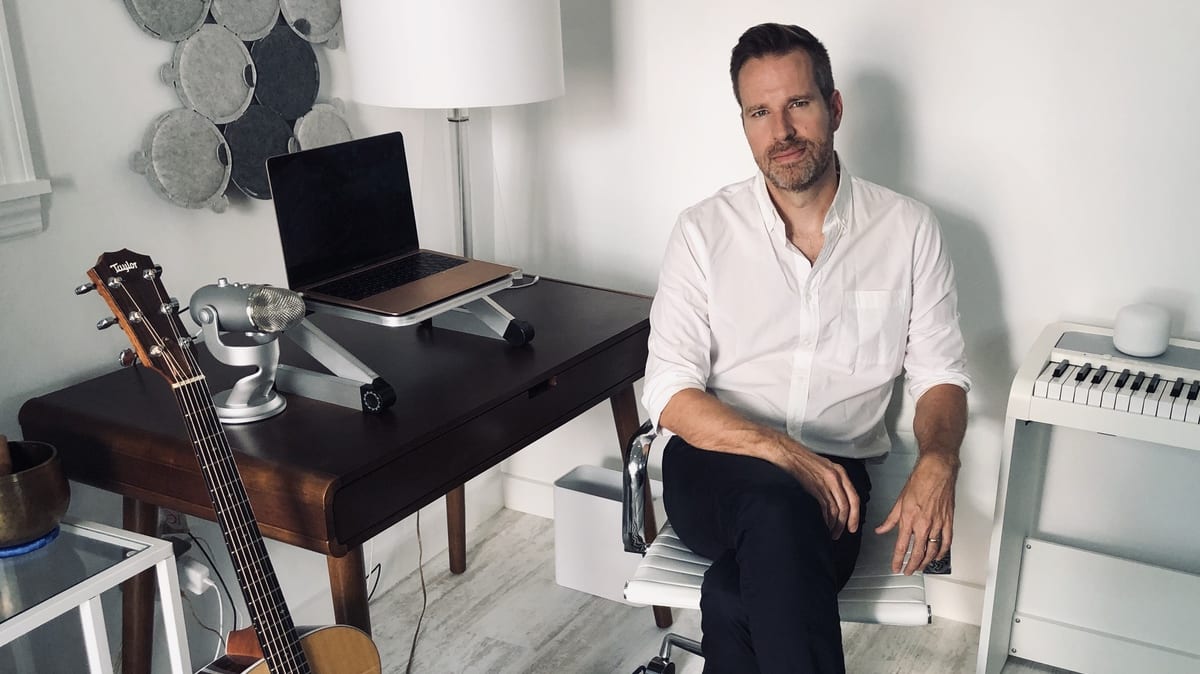
Mental-health professionals are adapting to virtual technology—and embracing its upside.
Andi Lyn Kornfeld hasn’t seen a patient in person for months. Yet every morning she wakes up, puts on a professional outfit, does her hair and makeup, walks to her office down the hall, and settles in front of her computer screen for the day.
“I kept the normalcy. I tried to for myself,” she said. “I felt that the way that I could help the most was to be who I was before.”
Kornfeld is a marriage and family therapist who has been seeing her patients virtually from her New York City home since the coronavirus struck in mid-March. She is one of thousands of therapists, psychologists, and psychiatrists across the U.S. who found themselves having to quickly adapt to virtual practices at a time when the need for therapy was on the rise.
“I did not do virtual sessions really prior unless it was an emergency,” she said. “But I moved virtual as soon as the lockdown happened in New York.”
While telepsychiatry and remote therapy sessions have been recognized as effective since the early 1960s, COVID-19 has put the practice into hyperdrive.
“In the past few decades preceding COVID, there was a large growing evidence base showing that we can treat most conditions in mental health [remotely] with equally effective outcomes. Although processes are different, obviously it was originally used for more remote populations and to provide access,” said Jay Shore, who is based out of Aurora, Colorado, and is chair of the American Psychiatric Association’s (APA) committee on telepsychiatry.
“And then when COVID hit, out of necessity, I think almost all organizations I know in the mental health sphere are using it to some extent.”
According to a June APA study, prior to the public health emergency only 36 percent of psychiatrists utilized telehealth in some capacity for their practice. Since the pandemic, fewer than 2 percent of the group reported not utilizing telehealth at all, with nearly 85 percent saying they used telehealth for at least three quarters of their appointments.
While Zoom sessions have allowed doctors and therapists the ability to continue to counsel patients and prescribe needed medication, they’ve also posed challenges.
Kornfeld said her biggest learning curve was figuring out how to read body language over a computer screen.
“I had always said that I didn’t like virtual sessions because the eye tracking wasn’t the same,” she said.
She found it hard to tell if a patient looking at the camera was looking her in the eye or at the room behind her. Then there was the issue with silences. In person, she said silence was a useful tool for conversation. Online, it could seem like a technical error.
Technology barriers were the hardest adaptation to Zoom sessions for Brian Harris, a music psychotherapist based in New York. Harris’s practice integrates music and vocals into his therapy sessions, often through playing musical instruments like the guitar and piano for his patients, or even engaging in ad-libbed duets as a means of expression. But Harris quickly learned how to deal with Zoom’s quirks, namely the time lag.
“You can’t ever be fully in sync rhythmically with the person who’s in front of you. So if I’m playing an accompaniment today on the guitar, and I’m asking somebody to sing, I have to be prepared that their singing will come back to me a little bit later,” he said.
Another hitch for Harris was the noise. It was one thing to hold his private sessions from his midtown Manhattan office, but it proved much harder to contain his own noise. Also working from the basement of his Hastings-on-Hudson, New York, home meant having to keep the sounds from his 3-year-old daughter out of his sessions too.
“She could be running across the floor right above me or having a tantrum or even just sort of giggling or playing really loudly. And those sounds would enter into my session. I think the whole country is facing this. Anybody who works from home and has roommates or pets or children would know. It’s really, really difficult to find a space that feels private and safe to do work,” he said.
He recently relocated his practice to a shed he built in the corner of his backyard.
Finding privacy during sessions is key for mental health professionals, and ensuring it exists is a legal component of their practice. Yet it’s been made harder by the constraints of their own home setups, as well as those used by patients.
Kornfeld said she often asks patients to show her the rooms that they are in are empty. She said she’s held many sessions with clients whose backs are against empty bathtubs. Then there’s the issue of making sure patients feel calm based on what they are seeing on their doctor’s screens.
“I try to make the environment feel like home as much as possible… You’re coming to tell someone your most intimate secrets,” said Damion Brooks, a psychiatric nurse practitioner in Warner Robins, Georgia, who meets with and prescribes medication to patients suffering from various mental ailments, including trauma, PTSD and anxiety.
Brooks said he switches up the background behind him depending on the patient he’s about to see virtually. If it’s a grownup, he often has a football game playing in the far background. For child patients, he sometimes steals Marvel posters from his son’s bedroom to bring youthfulness to the space.
While therapists across the U.S. have adapted to virtual sessions, the pros and cons of the practice are mixed, especially with what some have called “Zoom fatigue.” But Shore thinks a benefit of the pandemic is that it pushed telepsychiatry into the mainstream, and he hopes it will offer what he calls a “renaissance” of the technique for doctors.
“It’ll be a new world. I think we’ll see more virtual workplaces and workspaces,” he said. “My hope is that we adopt the best of both so we have a blended model.”
For Harris, switching to virtual therapy has allowed him to consider new opportunities not just for his practice, but his family life.
“I sort of assumed that it takes time to build a private practice and that I could never really move out of New York because my job is so specific,” Harris said.
“But I’ve been thinking about the possibility of taking my daughter for a year abroad when she gets older… I realized that a lot of my clients would probably stay with me when I do that. And then I would have the opportunity to take as many who wanted to stay with me via telehealth. And that really opened my eyes.”

